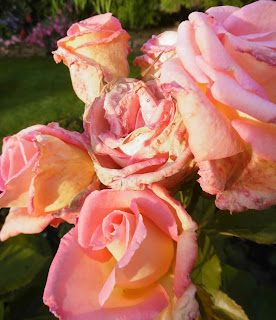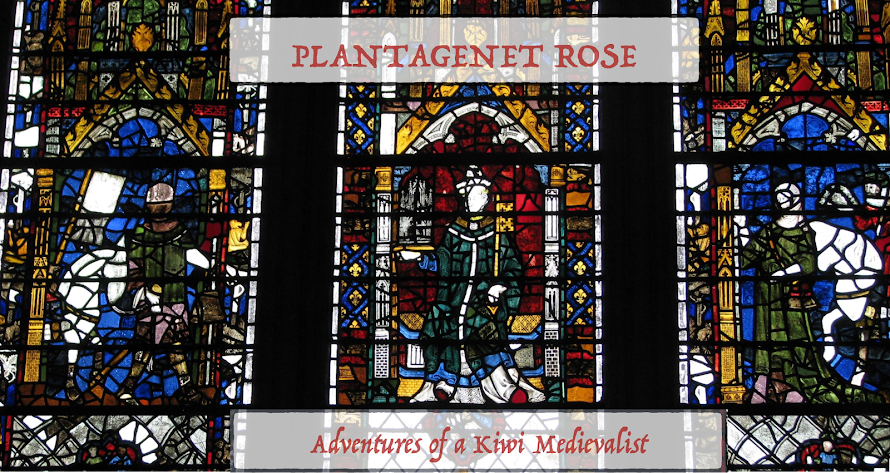Long time no blog! As most of you already know, I have been away for the past month, in England, indulging in walking, swimming, sightseeing, raspberries, strawberries, and Pimm's; rejoicing in the British 'summer;' marvelling at Brexit; attempting to drive a manual; taking far too many photographs of medieval stained glass; and smelling the roses.
The most famous medieval roses are of course the white rose of the Yorkists and the red rose of the Lancastrians:
The Wars of the Roses may have officially ended in 1485 with the triumph of the Earl of Richmond (who became Henry VII, the first Tudor king), but modern-day Lancashire and Yorkshire remain jealously proud of their respective roses. Both counties use the rose on their road signs (the brown ones pointing to sites of historical significance) and the roses are also a pretty common sight on flags, fluttering over the doorways of authentic olde worlde tourist shops!
Digging around for information on roses in the Middle Ages I came across a very interesting article in the gloriously-named Economic Botany journal, to which I refer the curious for further reference:
Mia Touw, "Roses in the Middle Ages," Economic Botany 36 no. 2 (1982): 71-83.
 |
| Sunset roses: perfect imperfection (Stonegarth) |
I am the queen whom everybody knows:
I am the English Rose;
As light and free as any Jenny Wren,
As dear to Englishmen;
As joyous as a Robin Redbreast's tune,
I scent the air of June;
My buds are rosy as a baby's cheek;
I have one word to speak,
One word which is my secret and my song,
'Tis "England, England, England" all day long.
(Cicely Mary Barker, The Song of the Wild Rose Fairy)






















